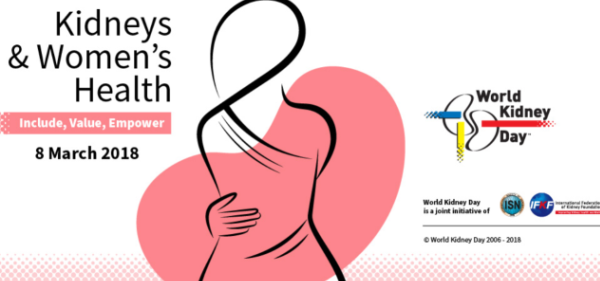Steve Perkin
Trawling unusual websites, as I sometimes do, I came upon a site that listed worldwide days of significance. It told me that 8 March is World Kidney Day and asked the question: “How will you be celebrating?”
To be honest, I wasn’t planning anything.
Close as I am to my kidneys, I’ve never felt the urge to celebrate their presence, and even if I did, I wouldn’t know where to start.
Cooking up a steak and kidney pie might be appropriate but it seems rather macabre. Opening a can of kidney beans doesn’t excite my palate, which gives rise to the question: what came first, the kidney or the bean?
I then contemplated opening a bottle of wine to commemorate my kidneys’ years of solid service. Say a few words, perhaps. “To my left kidney and my right kidney, thank you for doing whatever it is you do every day. I wouldn’t be here without you.”
Or would I? Plenty of people are born with one kidney and many others lose one through disease or injury. Could we survive without any?
Turns out you can, but you have to be hooked up to a dialysis machine. ‘Renal replacement therapy’ they call it.
And as for opening a bottle of wine, surely that wouldn’t be greeted too warmly by an organ whose primary function is to filter and regulate the bloodstream.
Not so. In fact, my research tells me that the best four drinks for kidney health are: wine, cranberry juice, citrus juices such as lemon and lime, and water.
But before you start thinking that a gin and tonic with a lemon wedge followed by a bottle of shiraz sounds like a prescription from heaven, be aware that any more than four drinks a day doubles the risk of chronic kidney disease.
And if you combine heavy drinking with a few cigarettes, you increase by five-fold the chances of your kidneys buckling under the pressure.
Anyway, back to the celebration of World Kidney Day that I wasn’t planning to have.
Perhaps, I thought, I could mold some mince into kidney burgers. Then I got to wondering whether a kidney replica would best be served as an entree or a main course. Was a kidney large enough to justify a dinner plate or just a bread-and-butter plate? Perhaps you could fit one into an egg cup. I honestly had no idea.
So I went back to the website that had raised the initial question, and I discovered that a male kidney weighs between 125g and 170g and is about 11.2cm long on the left side and 10.3cm on the right side. In females they are slightly smaller.
Interesting that the left was larger, but it turns out that it’s all about bodily balance. Which made me wonder that if the left kidney and the left side of the liver were both heavier than the right, would we walk with a lean?
Then, in the name of balance, we most certainly would need a second heart. Now there’s an evolutionary flaw. Why don’t we have two hearts? It is, after all, good enough for the octopus, which has three.
So I’m now making kidney burgers with a squeeze of lemon and washed down with a three-glass limit of wine. What meat do I choose for the burgers?
Most kidneys we currently eat are begrudgingly donated by pigs, cows and chickens. They have very little fat, acceptable protein levels and a moderate calorie count.
As for human kidneys, I suspect, like many things, we throw to the pig, but I can’t answer definitively. Somebody asked on a blog whether we could eat human kidneys and, not surprisingly, he didn’t get any answers.
Ancient Egyptians certainly weren’t into eating human kidneys. Mummified bodies have been found with kidneys intact – and the heart – while other organs are missing.
Yes, my celebration menu is taking shape. I’ve just got to be careful that people don’t eat too many kidney burgers because eating too much meat generates high levels of acid in the blood and kidneys don’t like this.
Nor do kidneys like too much salt or too much sugar. And sitting still for long periods has been linked to kidney disease, so I’ll make my salt-free burgers hand size so the guests can walk while they eat.
I hope I’m not alarming you with all this stuff about maintaining healthy kidneys. The sad reality is, however, that chronic kidney disease affects millions of people worldwide and, perhaps surprisingly, is slightly higher among women.
About a million people die from the disease each year; a good reason, if you haven’t already, to donate your kidneys for organ transplant.
So there you have it. The party is at my place. We’ll be eating salt-free kidney burgers with lemon wedges, a sugar-free kidney bean cake, and three glasses of wine, while walking around the block. Just look for the kidney-shape balloons out front.
Related articles:
Keep your kidneys healthy
Deadly diseases for women
Lancashire Hotpot

